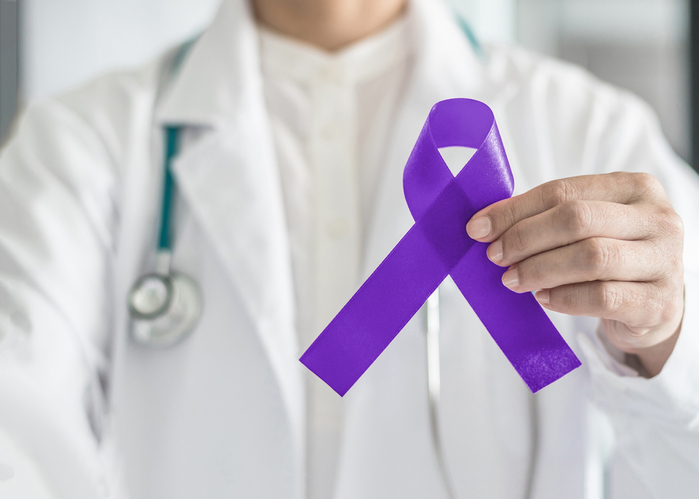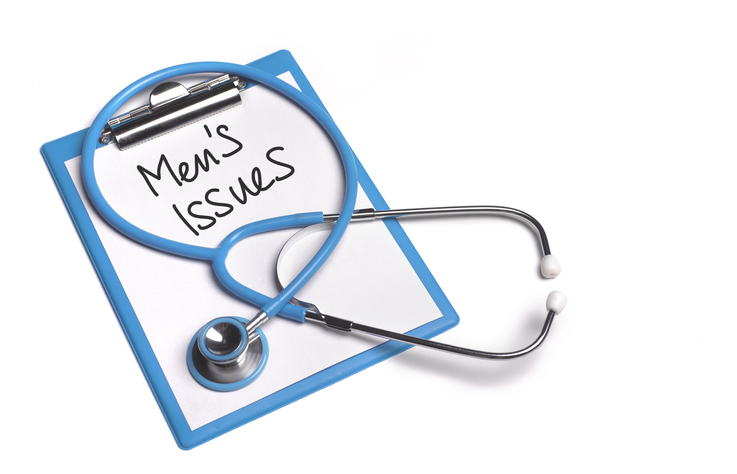April is Testicular Cancer Awareness Month – Here’s What You Need to Know

By Joy Stephenson-Laws, J.D., Founder
Every hour of every day, at least one man is diagnosed with testicular cancer (also known as cancer of the testes). The testicles are responsible for producing sperm and male sex hormones. They are in the scrotum, which is underneath the penis. While perhaps not as well-known as other cancers, this type of cancer is the most common in men between the ages of 15 and 35 (although it does occur in younger and older men).
On average, at least one man is expected to succumb to this cancer every day. It is more common among white men, whose risk for testicular cancer is four to five times that of black and Asian-American men. The number of men being diagnosed has been steadily increasing for several decades. Unfortunately, doctors and researchers have not yet been able to determine why this is happening, although there are various theories.
Testicular cancer develops, as do other cancers, when cells experience abnormal growth and form a tumor which invades surrounding healthy tissue. In the case of testicular cancer, it begins in what are known as “germ cells,” which produce immature sperm. One or both testicles may be affected. It also can spread (metastasize) to other parts of the body. These most often are the bones, abdomen, lungs, liver and brain.
The good news is that testicular cancer is very treatable and has five-year survival rates of up to 95 percent. If diagnosed in its initial stages, the 5-year survival rate can approach 99 percent. Testicular cancer cells can grow quickly, however, so it is crucial to catch it as soon as possible.

More than 90 percent of testicular cancers are of germ cells. Of these, about half are known as seminoma and the other half as nonseminoma. Some men are diagnosed with both at the same time. These cancers include:
- Seminomas, which happen in the sperm-producing germ cells, are more common in men 30 -50 years old. These cancers are usually less aggressive than nonseminomas.
- Nonseminoma testicular cancers usually occur in younger men. Given that germ cells are reproductive cells, nonseminoma cancers may be like embryonic tissues. They spread more rapidly.
Testicular cancer may also occur in non-reproductive cells of the testes: those which are responsible for producing male reproductive hormones or that produce nourishment for the cells responsible for producing sperm.
As with many other cancers, in its earliest stages it is very possible that a man will not have any indications or symptoms that he may have testicular cancer. If he does develop any signs, they could include:
- Pain or discomfort in one or both testicles as well as the scrotum
- Pressure or a dull ache in the lower back or abdomen
- The scrotum having a sensation of being heavy or full
- Unexplained weight loss
- A lump or changes in the size of one or both testicles
- Possible enlarged or tender breasts
- Enlarged neck, abdomen, lymph nodes
Doctors use a variety of tests to diagnose testicular cancer. In addition to a physical examination of the testicles and scrotum, these could include blood tests to look for testicular cancer markers; imaging such as ultrasound, MRI, CT scan, PET scan, or X-ray; and/or biopsy.
Risk factors for testicular cancer
While the causes of testicular cancer are not yet clear, doctors and researchers have identified various factors that can increase a man’s risk of developing this cancer during his lifetime. These include having:
- An undescended testicle: Known as cryptorchidism, this condition occurs when one or both testicles do not descend from the abdomen to the scrotum before birth. Even if the testicle(s) are later moved to the scrotum surgically, this continues to be a risk factor.
- Family history: If a close family member, for example a father or brother, has had testicular cancer, this may increase the risk for testicular cancer in other family members. The same is true for a man who has had testicular cancer before.
- HIV infection: There is some evidence that HIV may increase a man’s risk for development of testicular cancer.
- Abnormal testicle development: There are a variety of conditions that may impact how the testicles develop and these, in turn, may increase risk for testicular cancer.
- Carcinoma in situ of the testicle: This risk occurs when a germ cell cancer starts out as a non-invasive form of the disease that does not cause any symptoms or a lump that can be felt. Sometimes it is discovered at this stage when a man has a biopsy for another condition, such as infertility.
- Klinefelter Syndrome: which occurs when a man has an extra X chromosome, may increase the risk for testicular as well as other cancers.
Treatment for testicular cancer includes:
- Surgery removes the affected testicle(s)
- Chemotherapy uses different medications to kill or stop the growth of the cancer
- Radiation therapy uses x-rays or other radiation to kill cancer cells or keep them from growing
- High-dose chemotherapy with stem cell transplant kills the cancer cells while using stem cells to replace blood-forming cells which are also killed by the chemotherapy
- Surveillance (watch and wait) is usually done to find signs that a cancer has returned after treatment
Be Proactive to Reduce Testicular Cancer Risk
While we may not be able to eliminate all risks for developing testicular cancer, there are some steps you can take to reduce them and to help keep your body as healthy as possible. These include:
- Doing monthly self-examination of your testicles. In the same way women should be examining their breasts every month for signs of breast cancer, men should be doing the same for their testicles. Click here to learn how to do this self-examination.
- Reducing or eliminating use in your home of perfluorinated chemicals (PFCs). These are manufactured compounds used to make a variety of products that resist stains, grease and water. PFCs are also used in some food packaging. Some studies show they may have links to low birth weight, obesity, testicular cancer and kidney cancer.
- Quitting smoking (whatever is being smoked). Both tobacco and marijuana have been linked to testicular cancer.
- Talking with your doctor about the risks of using muscle building supplements. There is research that suggests that using dietary supplements for muscle building may be a potential risk factor for testicular cancer, especially if used before the age of 25.
- Following a healthy, primarily plant-based diet with a wide variety of fruits and vegetables. Also, keep in mind that there are studies that have found that diets high in red meat and fat (and low in veggies and fruits) can be linked to a higher risk of testicular cancer as can dairy (and especially cheese).
Also avoid processed and ultra-processed foods since these are inflammatory foods (they promote inflammation throughout the body). Inflammation is believed to be a major contributor to all types of cancer. Salami, bacon, white bread, candy, soda, chips and frozen pizza are examples of processed and ultra-processed foods. These foods are generally nutrient-void and have excessive sugar, salt and unhealthy fats. It’s also a good idea to get a routine nutrient test to identify any nutrient imbalances or deficiencies.
A man should get in touch with a competent healthcare practitioner if he finds something out of the ordinary with his testicle(s) or if he experiences any pain or swelling that lasts more than several days.
Enjoy your healthy life!
Disclaimer: This article is not intended to provide medical advice. Please consult with your doctor or another competent healthcare practitioner to get specific medical advice for your situation.
The pH professional health care team includes recognized experts from a variety of health care and related disciplines, including physicians, attorneys, nutritionists, nurses, and certified fitness instructors. This team also includes the members of the pH Medical Advisory Board, which constantly monitors all pH programs, products, and services. To learn more about the pH Medical Advisory Board, click here.







